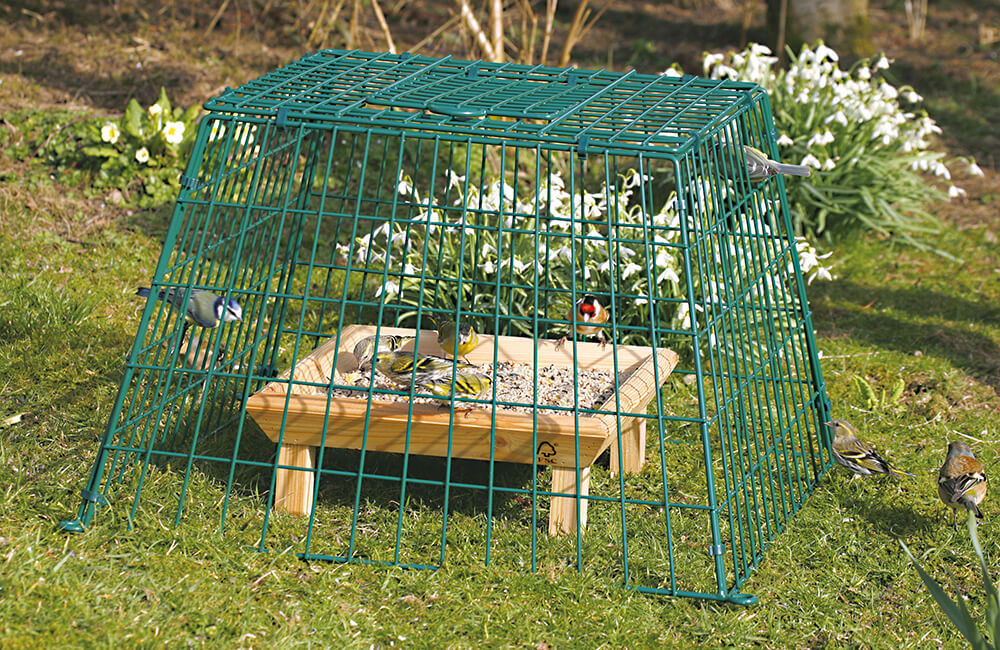Pigeons and doves are a familiar sight in many gardens, bringing a sense of tranquility with their gentle cooing and graceful presence. Understanding the different species that may visit your garden can enhance your bird-watching experience and help you create a more inviting habitat. Below are some of the most common pigeon and dove species you might encounter:
Feral Pigeon (Columba livia domestica)
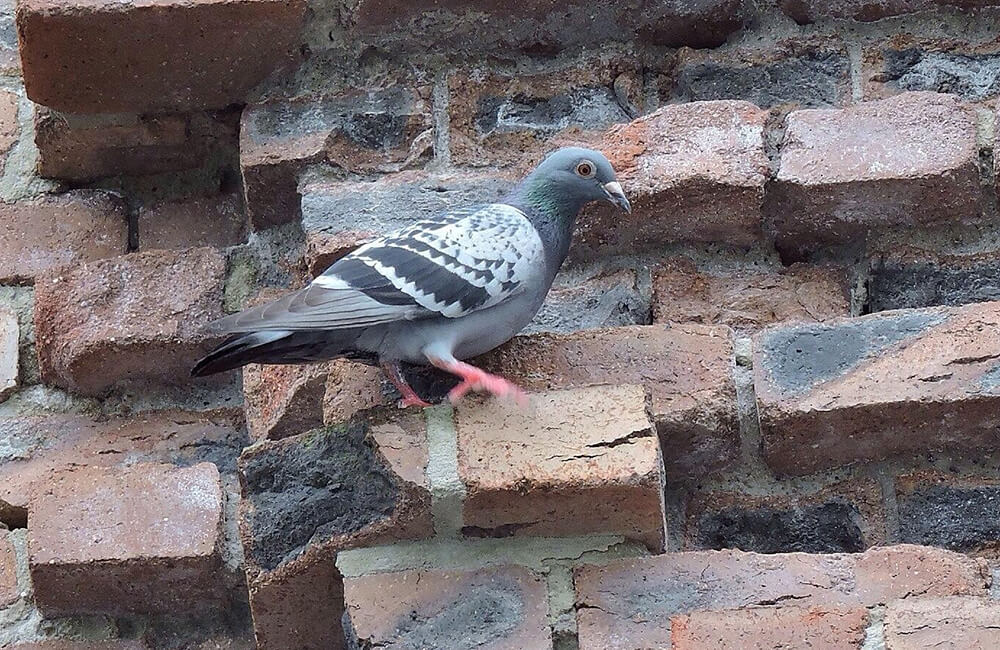

Descended from domesticated rock doves, feral pigeons are prevalent in urban and suburban areas. They exhibit a wide range of plumage variations, from the classic blue-grey with two black wing bars to entirely white or brown individuals. These adaptable birds often nest on buildings and thrive in environments altered by human activity.
Woodpigeon (Columba palumbus)
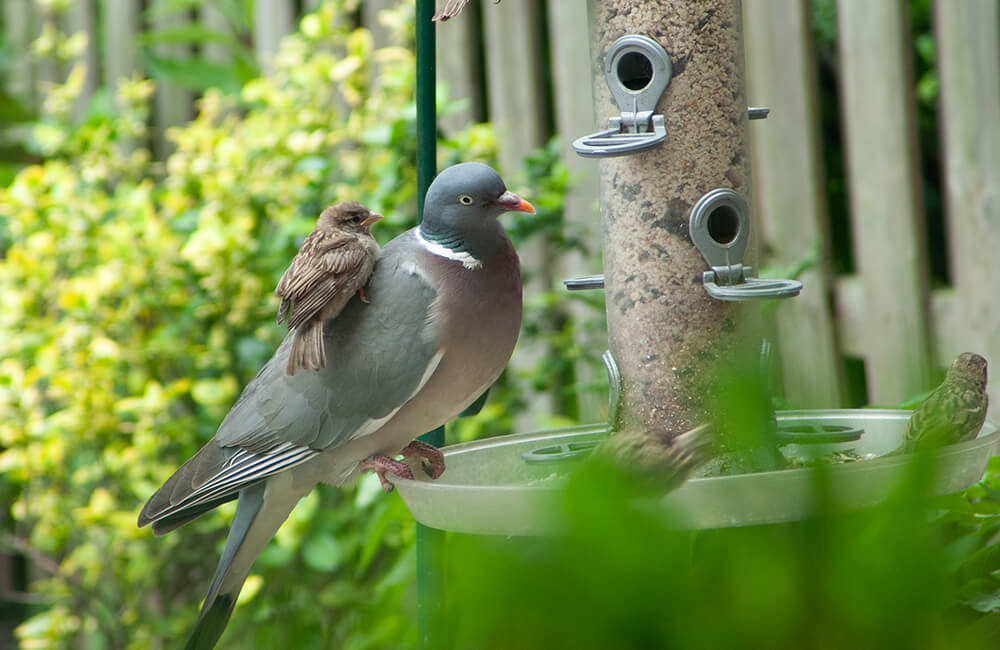

The largest pigeon species in many regions, the woodpigeon is easily identifiable by its grey body, white neck patch, and prominent white wing bands visible during flight. Their distinctive five-note cooing song is a common sound in gardens and woodlands. Woodpigeons feed on a variety of plant materials, including leaves, seeds, and fruits, and have adapted well to both rural and urban settings.
Turtle Dove (Streptopelia turtur)
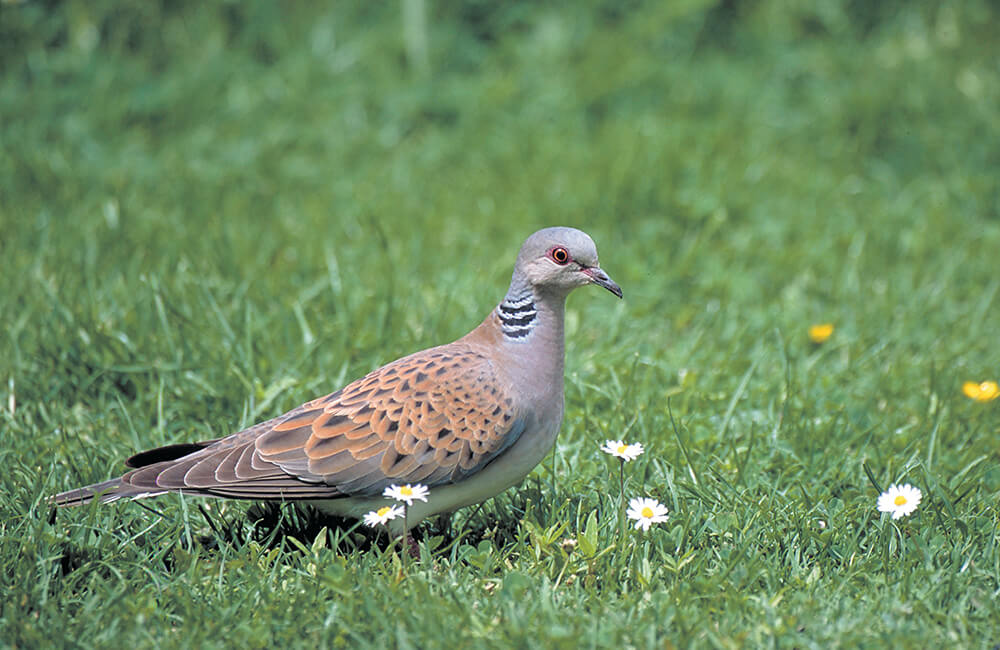

Smaller and more delicate than the collared dove, the turtle dove is distinguished by its mottled brown and black wings, a white-tipped tail, and a black-and-white striped patch on the side of its neck. Their gentle, purring song is a delight to hear. Unfortunately, turtle doves have experienced significant population declines and are now a rare sight in many areas.
Stock Dove (Columba oenas)
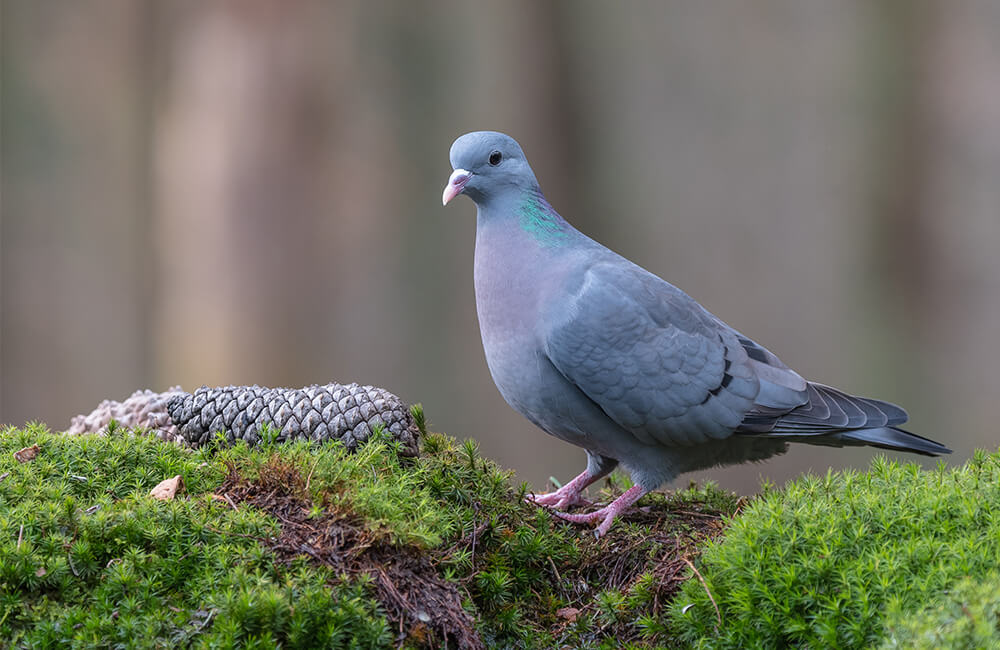

Often confused with the woodpigeon, the stock dove is slightly smaller and lacks the white neck patch and wing bands. They have a more uniform blue-grey coloration with a subtle iridescent green sheen on the neck. Stock doves prefer open countryside with mature trees but can also be found in parklands and large gardens.
Collared Dove (Streptopelia decaocto)
Recognizable by their slim build, pale grey plumage, and the characteristic black 'collar' on the back of their neck, collared doves have expanded their range significantly over the past century.
Since their arrival in the UK in the 1950s, their population has grown to nearly a million breeding pairs. Their monotonous cooing is a familiar sound in many gardens.
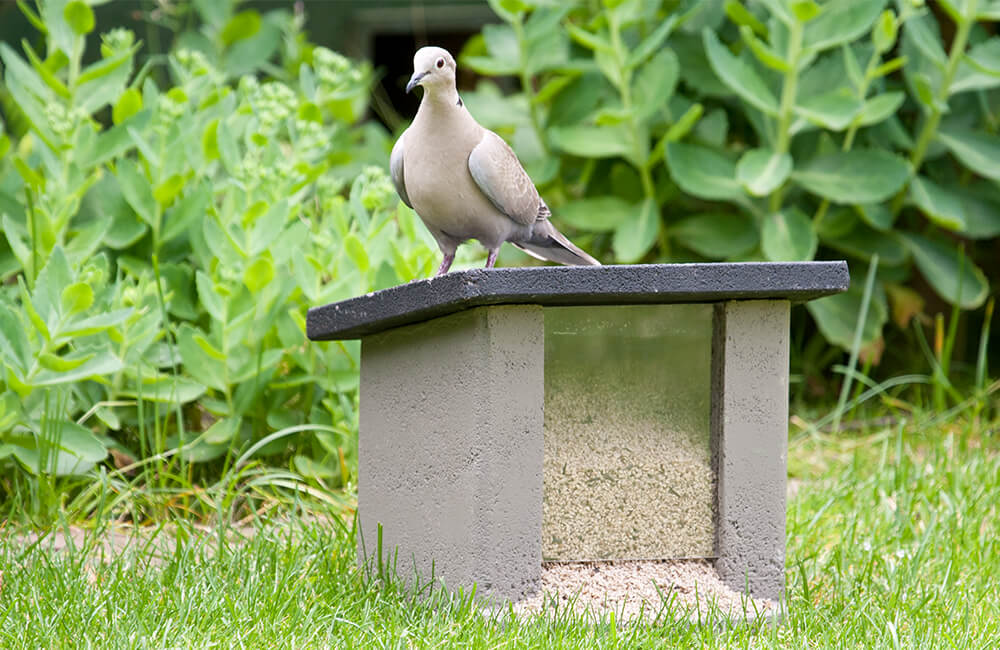

This unique WoodStone® feeder is specially designed for birds that prefer to feed on the ground, such as pigeons, blackbirds, robins, finches and sparrows.
Supporting pigeons and doves in your garden
To attract and support these birds in your garden, consider the following:
- Provide food sources: Plant native shrubs and trees that produce seeds and berries. Supplementing with bird feeders offering grains and seeds can also be beneficial.
- Fresh water: Ensure a clean water source for drinking and bathing, such as a birdbath.
- Safe nesting sites: Maintain hedges and trees to offer natural nesting opportunities. Installing nesting platforms or boxes can also encourage breeding.
- Limit disturbances: Keep the garden a peaceful refuge by minimizing loud noises and reducing the presence of predators like cats.
By understanding the different pigeon and dove species and catering to their needs, you can enjoy the presence of these charming birds and contribute to their conservation.
What type of bird feeder is suitable for pigeons?
If you want to support and attract pigeons in your garden, then choose a suitable ground feeder or bird table to accomodate them. Pigeons often desperately try to land on regular bird houses and thereby create some chaos.
Suitable bird feeders for pigeons include:
- Bird feeding tables
- Any type of open bird dish (like displayed on the image)


How to stop pigeons from eating bird food
Some garden owners want to feed small garden birds only, like Robins and Great tits - but feeding stations usually also attract pigeons. Due to their size and appetite, they empty most bird feeders rather quickly.
A humane way to stop pigeons from reaching small bird food is installing a pigeon safe feeder. This can be achieved by the following steps:
- Installing a guardian cage around your bird feeder: This will only allow small birds to enter the cage.
- Attach a tray below your bird feeder: This way no more bird food will drop to the ground, which unwanted visitors may pick up from there.
